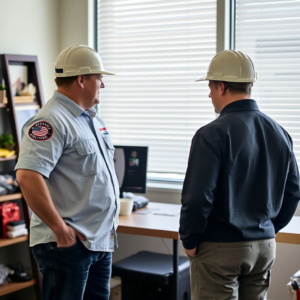Recovery from a fire in your house has always been difficult. Aside from the emotional toll, one of the first obstacles that greet you as a homeowner is the cost estimation for restoring your house. A critical metric often used in this process is the fire restoration cost per square foot. Understanding these factors is needed to estimate and manage fire restoration expenses.
This guide breaks it down further. It includes discussions about cost ranges, factors that affect those costs, and practical ways to manage guesswork in estimating the expenses involved with fire restoration.
What Is the Fire Restoration Cost Per Square Foot?
The fire restoration cost per square foot provides a standard measure for estimating the expenses tied to rebuilding and repairing fire-damaged homes. On average, homeowners can expect these costs to range from $50 to $200 per square foot, depending on a variety of factors. Here’s what this range typically includes:
- For lightweight fire damage, the cost can range from around $50 to $100 per square foot. This would include minimal cleaning of smoke residue, repainting, or replacing drywall in a contained area.
- $100 to $200 per square foot which is moderate to severe damage, leading to damage in multiple rooms or structural collapse of beams, flooring or roofing.
- Costs above $200 per square foot may apply in cases of widespread destruction, total rebuilds, or when using premium materials and finishes.
What Drives Fire Restoration Costs Per Square Foot?
1. Scope of Fire Damage
The severity of the fire dictates how much work is needed. For instance:
- Smoke and soot damage primarily affecting further surfaces, minimum cost could be placed via deep cleaning, deodorizing or repainting.
- Structural damage entails heavy building mostly in walls, ceilings, or even as big as a whole room- all of this boosts cost a square foot significantly.
2. Property Size
It is obvious that a large house will need more material and labor. But, even if total costs increase, larger projects sometimes have a lower cost per square foot because of economies of scale.
3. Superior Material Quality
Generally, materials used for restoration to determine costs. Materials of basic grade are much less expensive than those of higher-end floors, cabinetry, or roofing, which add tremendously to the price per square foot.
4. Exploring Labor Costs Across Regions
Labor rates fluctuate regionally. Urban areas with higher demand for skilled restoration workers generally have higher fire restoration cost per square foot compared to rural areas.
5. Additional Complications
Concealed problems, such as mold growth from extinguishing fire, or rewiring would add to the project making it costly.
Calculating Fire Restoration Costs Per Square Foot
An accurate picture of your total fire restoration expenses is achieved by properly calculating. Here’s a step-by-step guide to help you determine your costs:

Step 1: Measure the Affected Area
When starting, obtain a measurement of the total square footage affected by the fire. Such measurements should include all rooms and sections needing repairs, cleanup, or rebuilding.
- For light damage, you may only need to measure specific rooms.
- For severe damage, you’ll measure the entire house.
Step 2: Assess Damage Severity
Identify the level of damage (light, moderate, or severe) based on the size and scope of the fire, as well as related issues like water damage.
- Use the $50 to $100 range for minor cleanup and surface restoration.
- Use the $100 to $200 range for moderate damage requiring significant structural repairs.
Step 3: Request Estimates
When you request bids from fire restoration contractors, the professionals will provide you with an itemized quotation differentiating the costs of materials, labor, and cleanup by square footage.
For example:
To restore a 1,000 square foot area of fire damage at a rate of $150 per square foot would come near costing $150,000.
Step 4: Consider Additional Costs
Be sure to include anything extra such as the cost of permits, temporary accommodation, or upgrades to materials. Also, set aside anywhere between 10-15% of the budget as a contingency to cover unforeseen expenses.
Step 5: Consult Your Insurance Policy
Go through your homeowner policy to check what expenses will be covered. There are most policies against fire damages but vary from one policy to the other in terms of terms and limits of coverage. It can significantly reduce your out-of-pocket costs if it covers structural repairs and personal belongings.
Smart Strategies to Cut Fire Restoration Costs
While fire restoration can be expensive, there are ways to manage your costs effectively:
1.Work with Certified Restoration Experts
Consultation with experienced fire damage professionals, highly qualified contractor that hires an exceptional personal touch, diligent and efficient, and cost consultant.
2. Prioritize Structural Repairs First
When considering renovation or remodel during a restoration project, it is better to ensure basics such as framing, roofing, plumbing, and power supply are first sorted out before proceeding to a full-on remodeling.
3. Repair Versus Replace
Saves the costs of repairing existing structures instead of entirely replacing them. For example, repairing a partial roof damage may turn out cost-effective than the cost of a replacement roof.
4. Shop Around for Materials
Look through materials and finish prices. Most often, contractors may also have access to deals on bulk material procurements that can aid in reducing cost
5. Invest in Fire Prevention Measures
Investing in safety systems, like smoke alarms, sprinklers, and fire-resistant materials, should be done during restoration to protect the home and possibly lower future insurance premiums.
The fire restoration cost per square foot is a valuable benchmark for estimating expenses after a house fire. Generally expect costs from $50 to $200, depending on how bad the damage is, what materials you decide to use, and the labor rates where you live. Talk to the professionals, understand your insurance coverage, and use a calculated plan: all of these will allow you to make intelligent decisions that ease the pain of your finances for rebuilding your home.
Previous